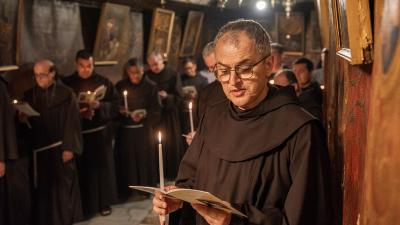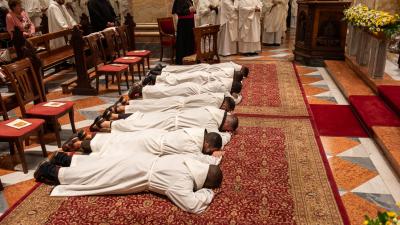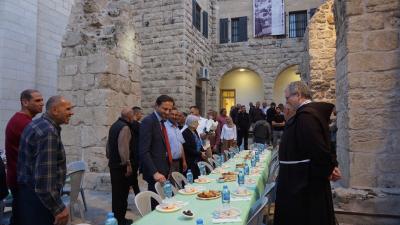
For some, its meaning in Aramaic is oil press or oil mill, and for others the correct translation is “the press of abundance.” However, it is translated as Gethsemane, an important place in Jesus’ life and the Passion, which involved olive trees and during these days hosts the annual olive harvest.
The Olive Grove is located east of the Cedron Valley, at the crossroads of the path that leads to the Church of Dominus Flevit and the bustling Jericho Road. Part of the garden is at the entrance to the Gethsemane Shrine, where there are 8,000 year-old olive trees and six “young ones,” while the rest is contained in the garden of the hermitage with its 225 trees. The tradition of the olive harvest is thousands of years old. As we read in the Bible, this type of practice was frequent at the time of King David, so much so that the place took its name from what it was used for. There was, according to tradition, a press that served to satisfy the immediate necessity of breaking the olives down as soon as possible so as to obtain extra-virgin olive oil.
The harvest became an event in 2014 when Br. Diego della Gassa, who is in charge of the hermitage, welcomed a Knight of the Holy Sepulcher, Enrique, and his wife Carolina for a retreat. That began a lasting friendship and various voluntary collaborations. Some time later, the two men being very attached to this place and having different contacts between friends and acquaintances, decided to sponsor the harvest. “It was the time of the intifada of the knives,” said Br. Diego. “And in Jerusalem there was a bit of fear of going out but that was a reason to have the opportunity to do it and above all to invoke peace and create a sense of family.”
In these places, the daily routine of ordinary gestures becomes something more profound: the gathering of olives is a point of contact with Jesus’ earthly experience. Several families took part in the event and the volunteers were all from different nations of origin and experiences. “We never ask ourselves what kind of faith experience people have, or if they have one” said Br. Diego, “we know, however, that some people who came and had to make particular choices about their lives came out of this garden with a different clarity that very often invited them to change course. The fruits here are beyond those physically harvested.”
Every year, there is an initial reflection and a different theme. Last year, the focus was on harvesting and contemplating about air of retreat that can be breathed in that place. Despite the noise coming from the street, in fact, the atmosphere is one of profound meditation and peace, a veritable retreat. This year, the central theme was the icon, a door from which the mystery within us can enter. In addition to the basic safety rules, in the initial instructions there was also a prayer about how to care about what is being done. Harvesting even the most distant olives here is not just a gesture but it is exactly what the Lord does with us: if you love, you care. You do not leave any aside because you have a deep desire to harvest.
“Our experience here,” suggested Fr. Diego in his initial invitation, “must be like an icon: a door that allows the mystery to enter into us.”
Many remember the experience of the harvest, especially those people who arrive at the hermitage of Gethsemane for a time of retreat and with the desire to re-experience Jesus’ story. “Knowing that Jesus was handed over here, in this place, his favorite place, which we find in the Bible linked to the expression as he was accustomed to visiting is something truly fascinating,” said a volunteer.
Giovanni Malaspina




